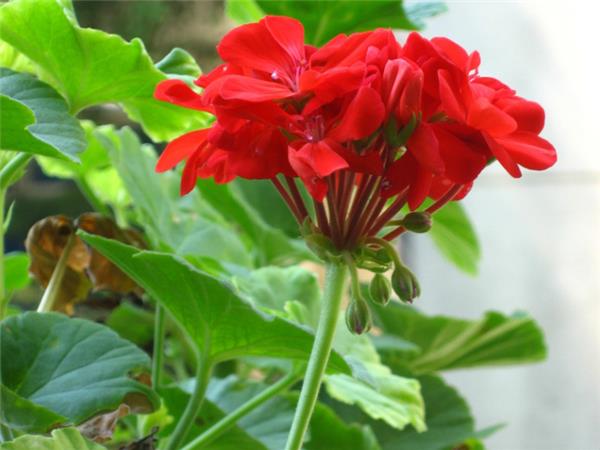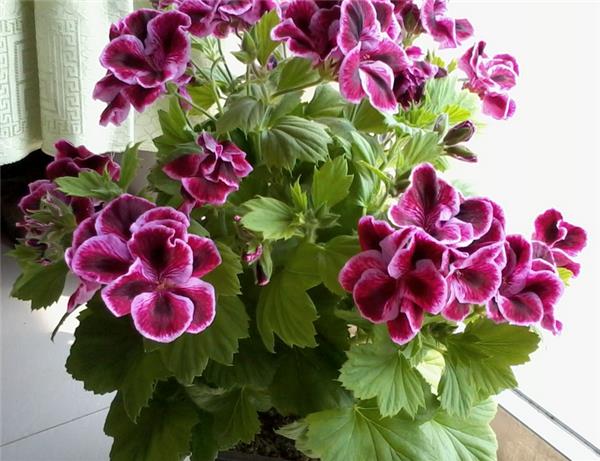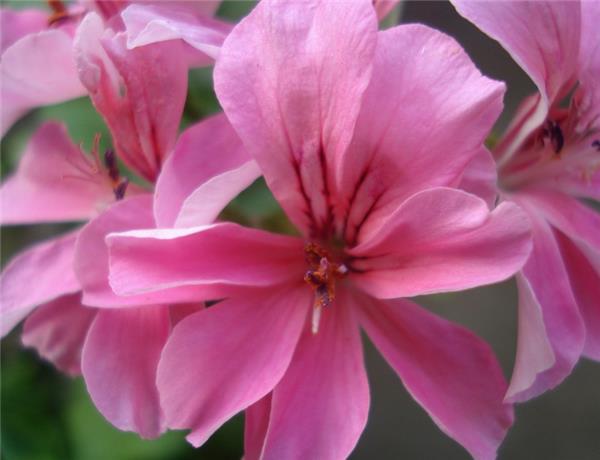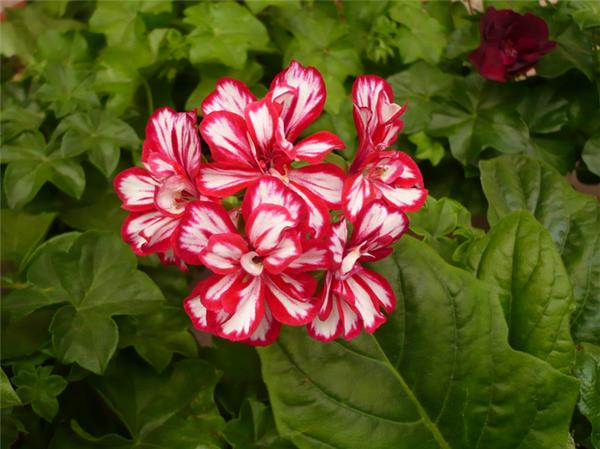How to raise Pelargonium Culture methods and points for attention
Geranium is a kind of perennial herbaceous flower, which is also known as hydrangea because of its dense flowers. Do you know how to raise geraniums? The following is a brief introduction for you.

How to raise geraniums
1. Soil selection of Pelargonium Culture
The pelargonium pot culture soil can be mixed with 4 humus soil, 3 garden soil (or peat soil), 2 river sand (or perlite) and 1 organic fertilizer, or mixed with fine sand soil, humus soil, perlite and organic fertilizer. Potted geraniums need to be turned in autumn.
two。 Fertilization methods for culture of geranium
During the growth period, liquid fertilizer is applied every 10-15 days, while in spring and autumn, liquid fertilizer is applied every 7-10 days; nitrogen fertilizer is the main fertilizer before budding, and phosphorus and potassium fertilizer is the main fertilizer after budding, and the concentration is 0.1%-0.2%. If the room temperature is relatively high in winter and does not stop growing, it should also be fertilized. Fertilization should be stopped when the plant is semi-dormant during the period of high temperature in summer. Because its stems and leaves are pilose, rinse with clean water immediately after fertilization.

3. Watering method of geranium culture
Watering properly would rather be dry than wet. Spring and autumn growth season should meet sufficient moisture, so that the basin soil often keep moist, but not stagnant water; in low temperature cloudy days, generally do not water, do not fertilize; less watering in summer. The high temperature season in the north is in the rainy season, during which the root system of the plant is relatively weak, so too much Rain Water irrigation should be avoided; days of overcast and rain will cause root rot, which should be placed in a place to avoid shade, dryness and ventilation. It can be watered according to the indoor temperature in winter, less watering at low room temperature and more watering at high room temperature. Pelargonium has a strong ability to withstand drought and will not die without watering for a few days, but the old leaves will turn yellow and fall off.
Watering should be dry and wet, and if the basin soil is too wet, it is easy to rot the roots, and if the basin soil is too dry, it is easy to cause the leaves to be withered and yellow, and it is semi-dormant from June to July, so watering should be strictly controlled. In summer, we often spray water to cool down, keep the basin soil moist, and pay attention to ventilation and light transmission. Control watering in winter.
4. Temperature requirements for geranium culture
Geraniums like warmth, avoid high temperature, and fear cold. The suitable temperature for the growth of geranium is 1525 ℃, and the indoor temperature should be kept at 10 ℃ in winter. Less than 3 ℃ is susceptible to chilling injury, but some varieties can tolerate the low temperature of 0 ℃. In summer, when the temperature exceeds 35 ℃, it enters a semi-dormant state.

5. Light requirements of geranium culture
It grows strongly under direct sunlight, the leaves are dark green, the internodes are short, and the plant shape is beautiful. But when the summer light is too strong, shade should be 30% to 50%. When raising families, they should be placed in places with direct sunlight in autumn, winter and spring, and can be moved indoors to enjoy them when they are in bloom, but they should still be placed in a place with light after flowering. Like sufficient sunshine, lack of light, do not blossom; flowering should avoid direct strong light, otherwise, petals scorched, easy to wither.
Turn the basin once a week to make the leaf surface receive light evenly. Keep the plant shape symmetrical. Keep it in the shade in summer to avoid the hot sun. The room temperature in winter is not less than 5 ℃, and the light is fully visible.
6. Control of diseases and insect pests in geranium culture
The main diseases of geranium are mosaic disease, wrinkle skin disease, chlorosis, gray mold, root rot and bacterial wilt, etc., and the main pests are white mosquitoes, caterpillars, small feather moths, etc.: it is of great significance to control mosaic disease and kill aphids. At the same time, other parasitic plants nearby should be removed: the control of small feather moth can be sprayed with 1000 times of trichlorfon.

Matters needing attention in geranium culture
When cultivating geraniums, we should pay attention to the prevention and control of diseases and insect pests, so as not to cause their plants to grow healthily because of pests, and to avoid exposure to sunlight, especially in summer. Water should also be properly watered, and do not pour too much water at once, so that it is possible to drown the plant.
High temperature, direct sunlight and stagnant water in the basin after rain will affect the dormancy of geraniums and even the death of rotten roots. Therefore, the dormant period should be put on the shady balcony, windowsill, or the courtyard to avoid the light and not be drenched by rain.
Related
- Wuhan Hospital Iron Tree Blooming Result Was Instantly Frightened by the Gardener Master
- Which variety of camellia is the most fragrant and best? Which one do you like best?
- What is the small blue coat, the breeding methods and matters needing attention of the succulent plant
- Dormancy time and maintenance management of succulent plants during dormancy
- Minas succulent how to raise, Minas succulent plant pictures
- What are the varieties of winter succulent plants
- How to raise succulent plants in twelve rolls? let's take a look at some experience of breeding twelve rolls.
- Attention should be paid to water control for succulent plants during dormant period (winter and summer)
- Watering experience of twelve rolls of succulent plants
- Techniques for fertilizing succulent plants. An article will let you know how to fertilize succulent plants.



